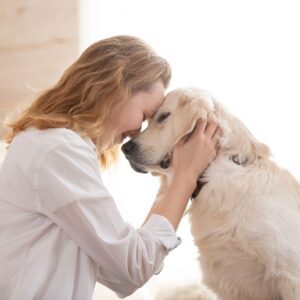Winter is well and truly here, and while it can be seen as a quite a fun it also brings some challenges for dogs and their people. Keeping your dog safe and happy in the cold should be at the top of your list this month as a responsible dog owner. If you’ve ever wondered how cold is too cold for dogs or felt a pang of guilt for skipping a walk on frosty days, this guide is for you.
How Cold is Too Cold for Dogs?
Dogs may have fur coats, but that doesn’t mean they’re immune to the cold. Just like humans, dogs have different tolerance levels for chilly weather depending on their breed, age, health, and coat type.
Here’s a rough temperature guide to help you gauge when it’s time to bundle up or stay indoors:
- Above 7°C: Most dogs are fine and can enjoy their usual outdoor activities.
- 4°C to 7°C: Smaller breeds, puppies, senior dogs, and those with short coats might start to feel the chill. Keep an eye on them.
- 0°C to 4°C: Many dogs will begin to feel uncomfortable. Consider limiting outdoor time and adding extra layers.
- Below 0°C: It’s time to be cautious. Frostbite and hypothermia become real risks, especially for dogs without thick fur.
- Below -4°C: For most dogs, it’s too cold. Opt for a quick toilet break and prioritise indoor activities instead.
Signs Your Dog is Too Cold
Dogs can’t tell us when they’re freezing, but they do show signs if they’re uncomfortable. Watch out for:
- Shivering or trembling: Just like humans, shivering is a sign they’re trying to warm up.
- Whining or whimpering: Your dog might be telling you they’re not happy out there.
- Lifting paws or refusing to walk: Cold or icy ground can be painful on bare paw pads.
- Lethargy or weakness: This can indicate hypothermia—a serious condition that requires immediate attention.
- Curling up or seeking shelter: If your dog is trying to find a warm spot, it’s time to bring them inside.
If you notice any of these signs, cut the walk short and warm your dog up with blankets or snuggles indoors.
Dangers of Grit and Salt on Paws
While gritted roads and pavements help us navigate icy conditions, they can be harmful to your dog’s paws. Grit and de-icing salts are abrasive and can irritate your dog’s paw pads, causing dryness, cracking, or even cuts. Worse still, if your dog licks their paws after a walk, they could ingest toxic chemicals from the salt, leading to gastrointestinal upset or more serious issues like salt poisoning.
Tips to Protect Your Dog’s Paws:
- Booties: Invest in well-fitted dog boots to shield their paws from grit and salt. They also provide extra grip on icy surfaces.
- Paw Wax: If your dog isn’t a fan of boots, paw wax can act as a barrier to protect the pads.
- Wash Paws Post-Walk: Always rinse your dog’s paws with warm water after a walk to remove any grit or salt. Dry thoroughly to prevent irritation.
- Inspect Paws: Check for redness, cracks, or any stuck debris after walks, and apply a dog-safe balm if necessary to keep paw pads soft and hydrated.
Winter Gear for Dogs: Coats, Booties, and More
Just as you wouldn’t go out in freezing weather without a coat, many dogs need an extra layer in winter too. Winter gear isn’t just about looking cute (though that’s a bonus!); it’s about protecting your dog’s health and comfort.
- Dog Coats: These are essential for short-haired breeds, smaller dogs, and senior pups. Look for waterproof options to protect against rain or snow, and ensure the coat fits snugly without restricting movement.
- Booties: While they might take some getting used to, dog boots are fantastic for protecting paw pads from icy surfaces, grit, and salt.
- Paw Wax: If boots are a no-go, paw wax creates a protective barrier to keep paws safe.
- Reflective Gear: With darker evenings, reflective jackets or collars are a great safety feature to make your dog visible to traffic.
Should You Skip Walks in the Cold?
Let’s be honest: not every day is ideal for a winter walk. Ice, snow, and freezing rain can create dangerous conditions for both you and your dog. It’s perfectly fine to skip a walk if it’s too cold—your dog’s health and safety come first.
Instead, try some indoor activities to keep them mentally and physically stimulated:
- Play tug-of-war or hide-and-seek.
- Use puzzle toys or treat-dispensing games to engage their brain.
- Teach them a new trick or practise basic training commands.
Feeling guilty? Don’t. Even the most energetic dogs can benefit from a cosy day indoors with their favourite human.
Resources for UK Weather Warnings and Pet-Safe Winter Advice
Staying informed is key during winter. Keep an eye on weather updates and consult trusted UK-based resources for advice:
- PDSA Winter Safety Tips: PDSA Website
- RSPCA Cold Weather Advice: RSPCA Website
- Blue Cross Winter Care for Pets: Blue Cross Website
Local councils often provide updates about road gritting and salt spreading, which can help you plan safer walks to keep your dog safe and happy in the cold. For weather forecasts and warnings, check the Met Office website (www.metoffice.gov.uk).
Final Woofs
Winter may pose its challenges, but with the right precautions, it can still be a season of fun for you and your dog. Remember, your dog relies on you to keep them safe and comfortable, so don’t hesitate to adjust your routine when the weather demands it.
And if you do venture out into the cold, don’t forget to capture some snowy snaps of your furry friend—there’s nothing quite like the sight of a joyful pup in the snow!
Keep your dog safe and happy in the cold, and give your dog an extra cuddle for being such a good sport this winter. 🐾❄️
FOLLOW UP READING: How to keep your dog entertained on a rainy day









Add a comment